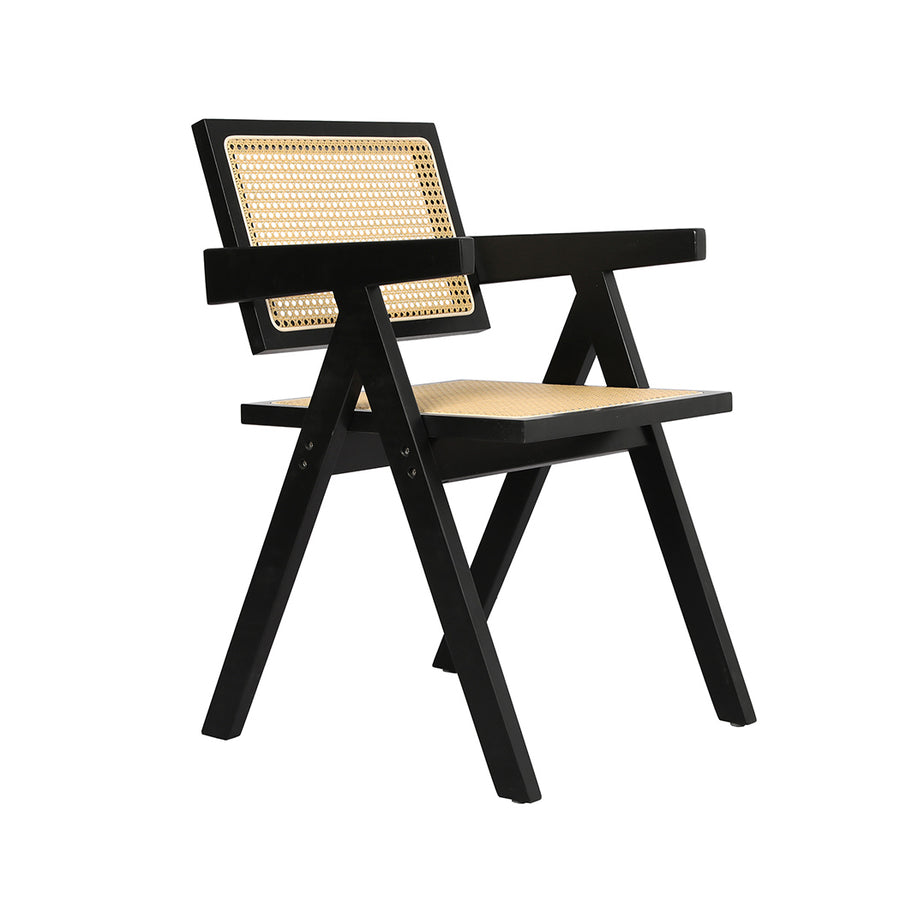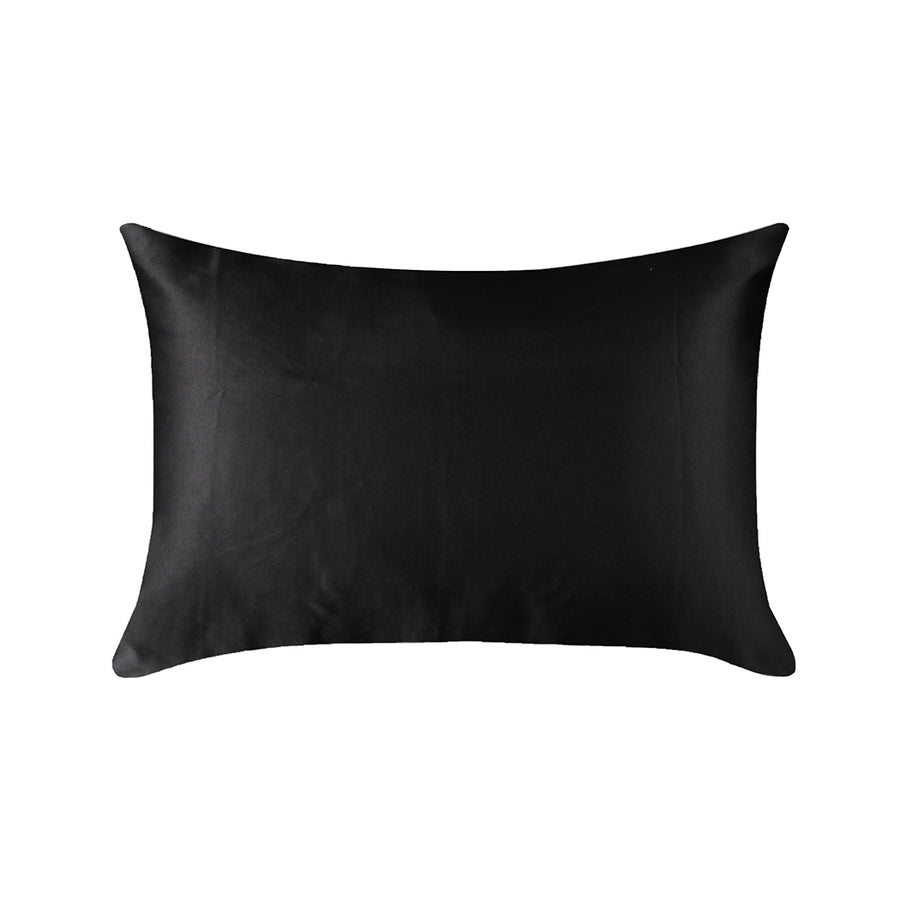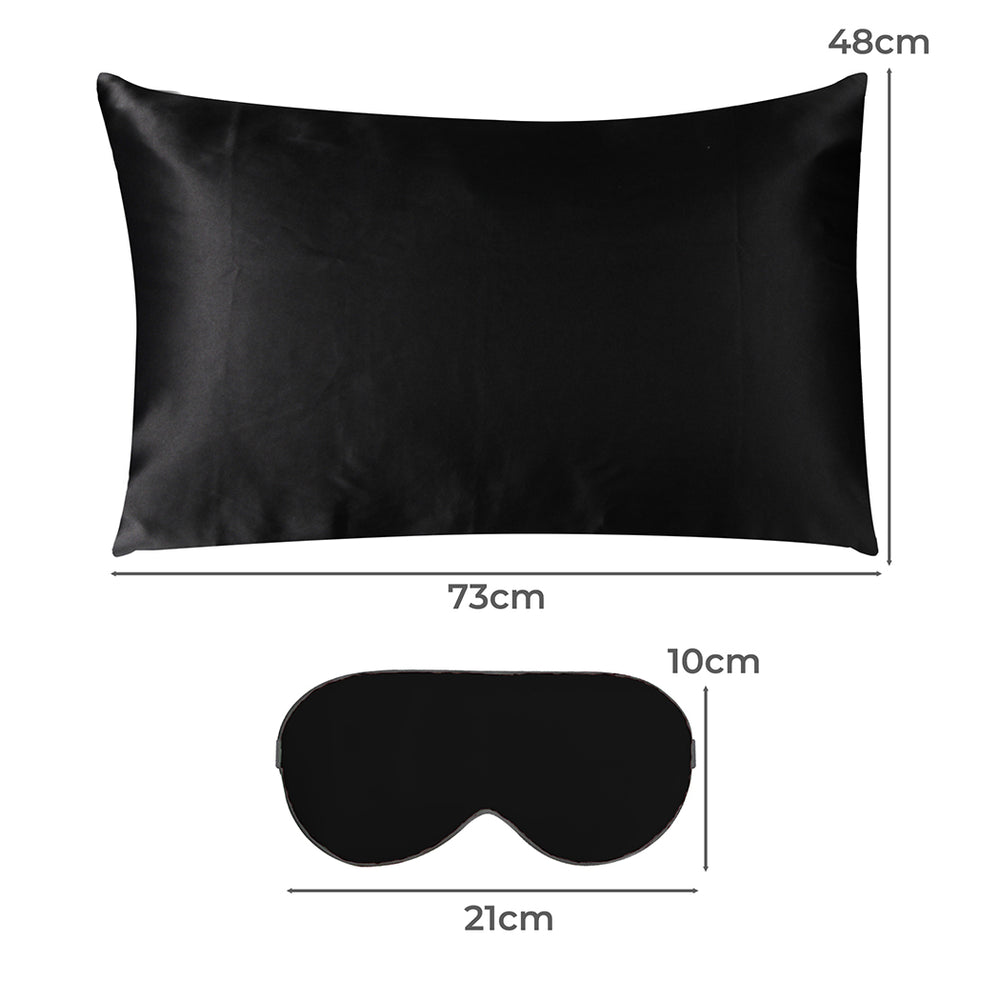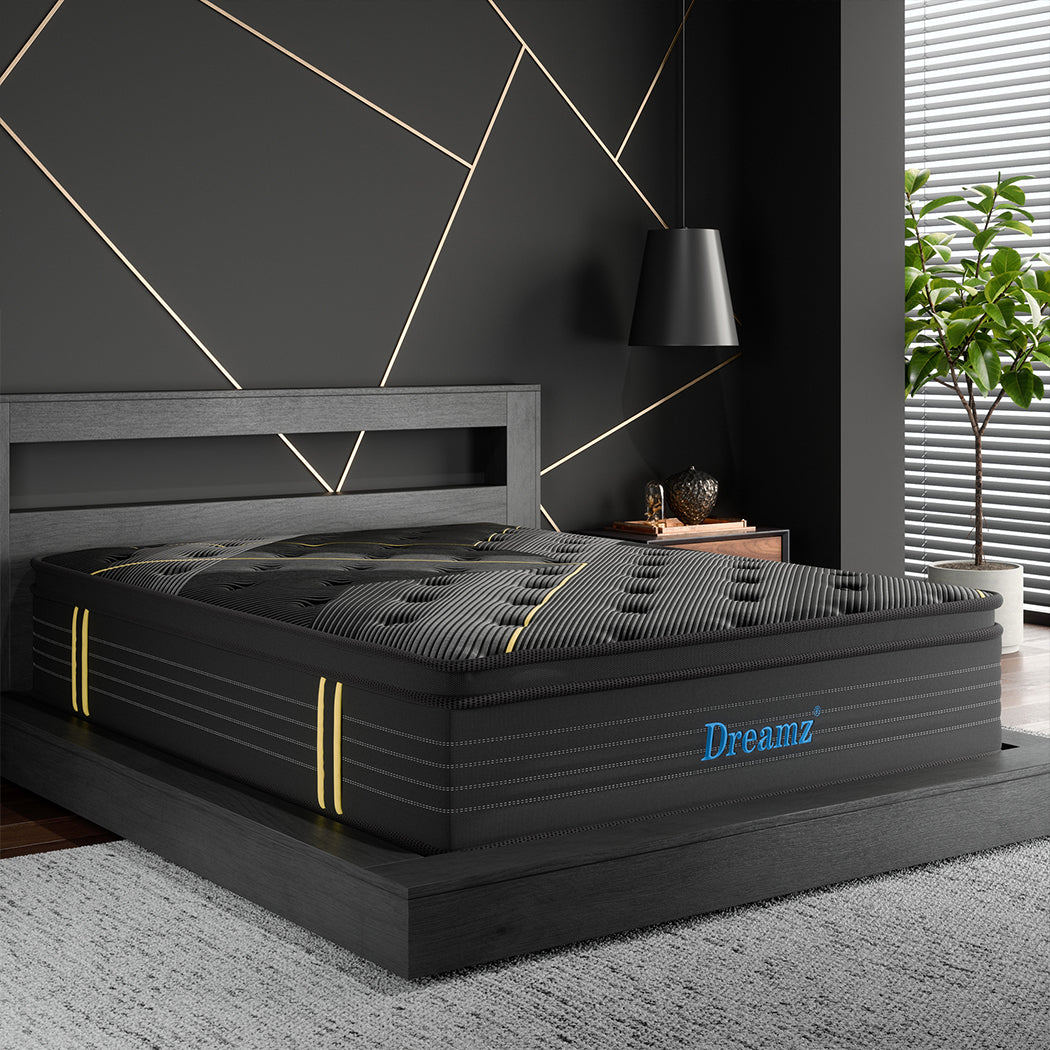
How Thick Should a Mattress Be?
When it comes to buying a mattress, size, material, and firmness usually take the spotlight — but there’s one detail that often gets overlooked: thickness.
The thickness of your mattress can make or break your sleep experience. Too thin, and you might not get enough support. Too thick, and it might feel like climbing onto a trampoline every night.
This guide breaks down everything you need to know about mattress height — with all measurements for Australian shoppers.
Mattress Thickness Chart & Best Use
Below is a simple guide comparing mattress thickness types, typical weight, and who they suit best.
|
Mattress Type |
Height (cm) |
Avg. Queen Weight (kg) |
Best For |
|
Low Profile |
5–13 cm |
8–11 kg |
Toddlers, bunk beds, foldaways beds |
|
Slim Profile |
13–20 cm |
11–16 kg |
Kids, lightweight sleepers, minimalist setups |
|
Standard Profile |
20–30 cm |
17–25 kg |
Most adults, guest rooms, everyday sleep |
|
Thick Profile |
30–40 cm |
26–32 kg |
Side sleepers, couples, people over 100kg |
|
Extra Thick Profile |
40 cm+ |
33+ kg |
Luxury setups, medical cushioning needs |
Note: Actual weight may vary by material (memory foam, hybrid, latex) and layer count.
What Makes Up Mattress Thickness?
Mattress thickness isn’t just about how tall it looks — it’s about what’s inside. The feel, firmness, and longevity of your mattress all depend on the layers it’s made of, and how thick each of those layers are.
1. Comfort Layer (Top)
This is the soft, plush layer you feel when you first lie down. It’s responsible for:
-
Cushioning your body
-
Relieving pressure (especially for side sleepers)
-
Giving you that “sink-in” or contouring feeling
Ideal thickness: 5–7 cm
Common materials: Memory foam, latex, quilted foam, gel-infused foam
If this layer is too thin → you'll feel the firm base underneath. Too thick → you might sink in too far and lose support.
2. Transition Layer (Optional)
Not all mattresses have this, but quality ones often do. It sits between the comfort layer and the base, acting as a buffer that:
-
Adds gradual support
-
Prevents you from “bottoming out”
-
Enhances pressure zoning (e.g. softer under shoulders, firmer under hips)
Ideal thickness: 2–5 cm
Common materials: Responsive polyfoam, latex, adaptive memory foam
3. Support Layer (Base Core)
This is the foundation. It keeps the mattress structurally sound and durable over time.
Ideal thickness: At least 50% of the total mattress height
For example, in a 30 cm mattress, the base should be at least 15 cm.
Common materials:
-
High-density foam (in memory foam mattresses)
-
Pocket spring coils (in hybrids or innerspring beds)
-
Latex (in natural or organic mattresses)
This is the layer that prevents sagging, supports your spine, and helps the mattress last 8–10 years.
How to Choose the Right Mattress Thickness for Your Body & Sleep Style
There’s no one-size-fits-all when it comes to mattress height. The best thickness depends on two key things: how you sleep and your body weight. Here’s what works best for each situation:
Sleeping Position
Side Sleepers (Recommended: 30–35 cm)
Side sleepers place most of their weight on their shoulders and hips. A thicker mattress with a plush comfort layer allows these areas to sink in just enough to relieve pressure — without throwing your spine out of alignment.
Look for: medium to soft feel, deep foam or hybrid build
Back Sleepers (Recommended: 25–30 cm)
Back sleepers need a balance of cushioning and firm support. Too soft, and your hips will dip; too firm, and your lower back won’t get proper contact.
Look for: medium-firm feel, good lumbar support in the base layer
Stomach Sleepers (Recommended: 20–25 cm)
This position can strain your lower back. A thinner mattress with a firmer feel keeps your hips lifted and spine flat, avoiding that saggy “banana” shape.
Look for: firm support core, minimal sink-in comfort layer
Combination Sleepers (Recommended: 25–30 cm)
If you shift positions during the night, go for a mattress with a medium feel and responsive layers. It should be thick enough to support pressure points, but not so thick that it traps you.
Look for: balanced construction, latex or foam hybrids
Body Weight
- Under 60 kg → 20–25 cm
Lighter individuals don’t need ultra-thick beds. A slimmer mattress still offers support without feeling overly firm.
- 60–100 kg → 25–30 cm
This range suits most adults. Look for a mattress that blends contouring with proper support in the core.
- Over 100 kg → 30–35 cm+
Heavier sleepers will benefit from thicker, denser support layers that prevent sagging over time. It’s also better for shared beds, where pressure is doubled.
Pro Tip: Always check the firmness and density of the foam, not just the height. A thick mattress made from soft, low-density foam might still bottom out — thickness alone isn’t everything.
How Your Bed Base Impacts Mattress Thickness Choice
It’s easy to focus only on the mattress — but your bed base plays a major role in how high (or low) your bed ends up. The wrong combination can make it uncomfortable to climb in and out of bed, especially if you have limited mobility or a tall frame.
Ideal Bed Height: 60–65 cm (From Floor to Top of Mattress)
To find the right total bed height:
- Measure your bed base (frame, slats, or foundation).
- Choose a mattress thickness that keeps the combined height between 60 and 65 cm.
- Sit on the edge — your feet should rest flat on the floor, knees at a natural angle.
If you’re using a box spring, go thinner on the mattress. If you’ve got a low platform bed, a thicker mattress will help raise the height.
Common Bed Base + Mattress Pairings
|
Bed Base Type |
Avg. Base Height |
Suggested Mattress Thickness |
Total Height Range |
|
Platform Bed |
25–30 cm |
25–30 cm |
50–60 cm |
|
Box Spring/Foundation |
35–40 cm |
20–25 cm |
55–65 cm |
|
Adjustable Frame |
20–30 cm |
Max 30 cm (for bending) |
50–60 cm |
|
Slatted Base |
20–30 cm |
25–30 cm |
45–60 cm |
For Older Adults or People with Mobility Issues:
Stick with a total height around 60 cm. A bed that’s too high or too low can make it harder to get in or out safely.
For Kids & Bunk Beds:
Use low-profile mattresses (13–20 cm) so there’s plenty of guard rail coverage and safe clearance.
How Mattress Material Affects Ideal Thickness
Not all mattresses are built the same — and some materials need more thickness than others to perform at their best. Depending on whether you’re buying a memory foam, latex, or hybrid mattress, the optimal height can vary.
Memory Foam Mattresses (Ideal: 25–35 cm)
Memory foam is popular for its contouring, pressure relief, and motion isolation. But for it to work properly, it needs a thick enough comfort layer and a dense support base.
-
Why thickness matters: Thin memory foam (under 20 cm) may sag early or feel too firm.
-
Best for: Side sleepers, couples, people with back or shoulder pain.
Tip: Look for multi-layered memory foam with a firm base and at least 5–7 cm of comfort foam.
Latex Mattresses (Ideal: 22–30 cm)
Latex is naturally responsive and breathable. It doesn’t need as much thickness to offer great support, making it ideal for people who want bounce without the heat retention of foam.
-
Why thickness matters: Too thick and it may feel too buoyant; too thin and it loses pressure relief.
-
Best for: Back and combo sleepers, people with allergies (natural latex resists dust mites).
Tip: A firmer latex core (around 15 cm) with a 5 cm comfort layer works well for most sleepers.
Hybrid Mattresses (Ideal: 28–35 cm)
Hybrids combine the contour of foam or latex with the bounce and support of springs. They’re usually taller than other mattresses due to multiple comfort and transition layers stacked over a pocket coil base.
-
Why thickness matters: Coils need space to compress without bottoming out; thicker builds ensure durability.
-
Best for: Heavier sleepers, side sleepers, people who want both comfort and airflow.
Tip: Choose hybrids with zoned support or gel-infused foam for added pressure relief and cooling.
Warning: Don't Let Thickness Fool You
Just because a mattress is thick doesn’t mean it’s supportive. It depends on the quality and density of materials. A cheap 35 cm mattress might wear out faster than a high-quality 25 cm one.
Thick Mattresses: Benefits vs. Drawbacks
Thicker mattresses often get attention for their luxurious look and feel — but is more always better? Let’s break down when a thicker mattress is a smart choice, and when it might be too much of a good thing.
Benefits of Thicker Mattresses (30 cm+)
1. Extra Comfort
More layers mean more cushioning, especially helpful for:
- Side sleepers who need pressure relief at the hips and shoulders
- People with joint pain, arthritis, or sensitivity to firm surfaces
2. Better for Heavier Sleepers
A mattress 30–35 cm thick with a strong support base is less likely to sag under higher weight. It provides the depth needed to prevent “bottoming out.”
3. Great for Couples
Thicker mattresses usually include motion-isolating layers — ideal when sharing a bed. They absorb movement, so you’re less likely to feel your partner tossing or getting up.
4. Longer Lifespan (When Made Well)
A well-built thick mattress with a high-density core and proper layering is more durable than a thinner, budget mattress.
Drawbacks of Thicker Mattresses
1. Harder to Get In & Out Of
If paired with a tall bed base, thick mattresses can push your total bed height past 70 cm — not ideal if you’re shorter or have mobility concerns.
2. Heavier to Move
A queen mattress over 35 cm can weigh upwards of 35 kg, making it tricky to rotate, flip, or transport without help.
3. Requires Special Bedding
Standard sheets may not fit. You’ll likely need deep-pocket or extra-deep fitted sheets for anything over 30–35 cm.
4. Can Be Overkill
If you’re a lightweight sleeper or prefer a firmer surface, a 35 cm mattress may feel too soft and unnecessarily bulky.
Summary: Should You Go Thick?
|
If You… |
Then Go For… |
|
Sleep on your side |
30–35 cm mattress |
|
Weigh over 100 kg |
30–35 cm with dense support core |
|
Share a bed |
28–35 cm for motion isolation |
|
Sleep alone under 60 kg |
20–25 cm is likely enough |
|
Have limited mobility |
Stay under 30 cm (check total bed height) |
What Mattress Thickness Is Right for You?
Choosing the right mattress thickness isn’t just about preference — it’s about matching your body, sleep style, and bed setup to a mattress that will support you night after night.
Whether you’re upgrading from a tired old mattress or setting up your dream bedroom, Levede’s Dreamz mattress range has you covered.






